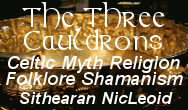Since there is a discussion going on outside the heathen community about fairy tale dwarves, due to Disney planning yet another remake, let's discuss fairy tale and mythology dwarves. To us, members of the heathen and pagan communities, myth does not mean fictional, it means religious literature. Most of the Norse myths, and depending on the specific sect, many of the Germanic fairy tales as well, are known as the Lore, meaning religious canon.
The Dwarves of heathen mythology that both some modern heathens and heathens of historical times worship are not humans, they are the residents of Svartalfheim. Svartalfheim means Dark Elf Home. It is generally thought that 'dark' here refers to their underground world rather than to their appearance. The Dwarves appearing small seems to be fairly arbitrary in the Old Norse, just like the size of Giants, who can appear either much larger than the gods or the same size as the gods. Fairy tale era dwarves in German are all seen as small, but fairy tale era elves and fairies are also usually seen as small, and they were not always small in their original depiction in older Lore and literature. In English, the Modern English word Dwarf and the older word Dweorg both referred to small beings who were connected to the earth element, and to small people and living things in general. Like Dwarf, Fairy is another English word that refers to a non human entity but is sometimes used to describe human beings. Let us not confuse them. The English word Giant is yet a third word that refer to a mythological or fairy tale being or could refer to a human being, and even objects can be referred to as giant.
...























